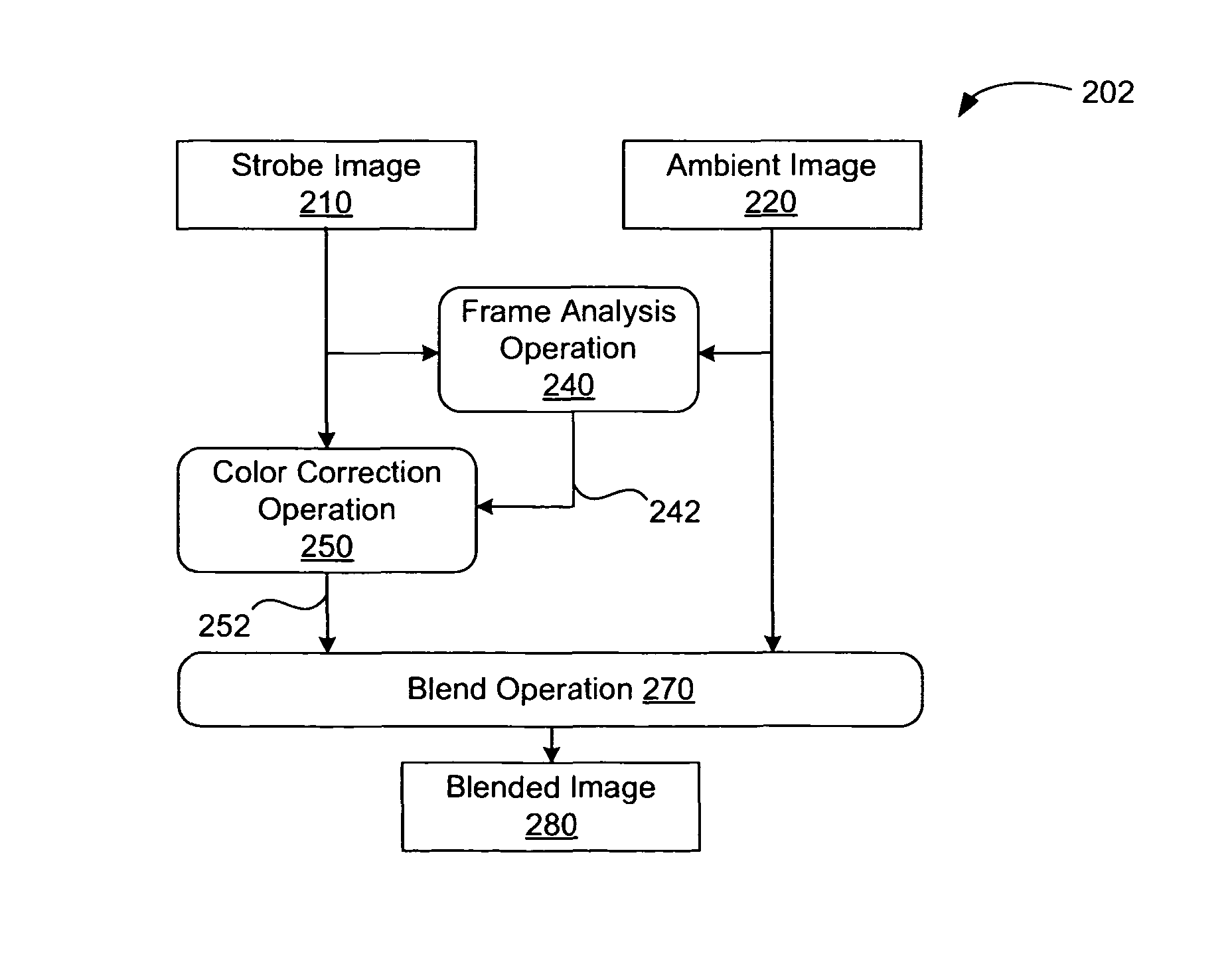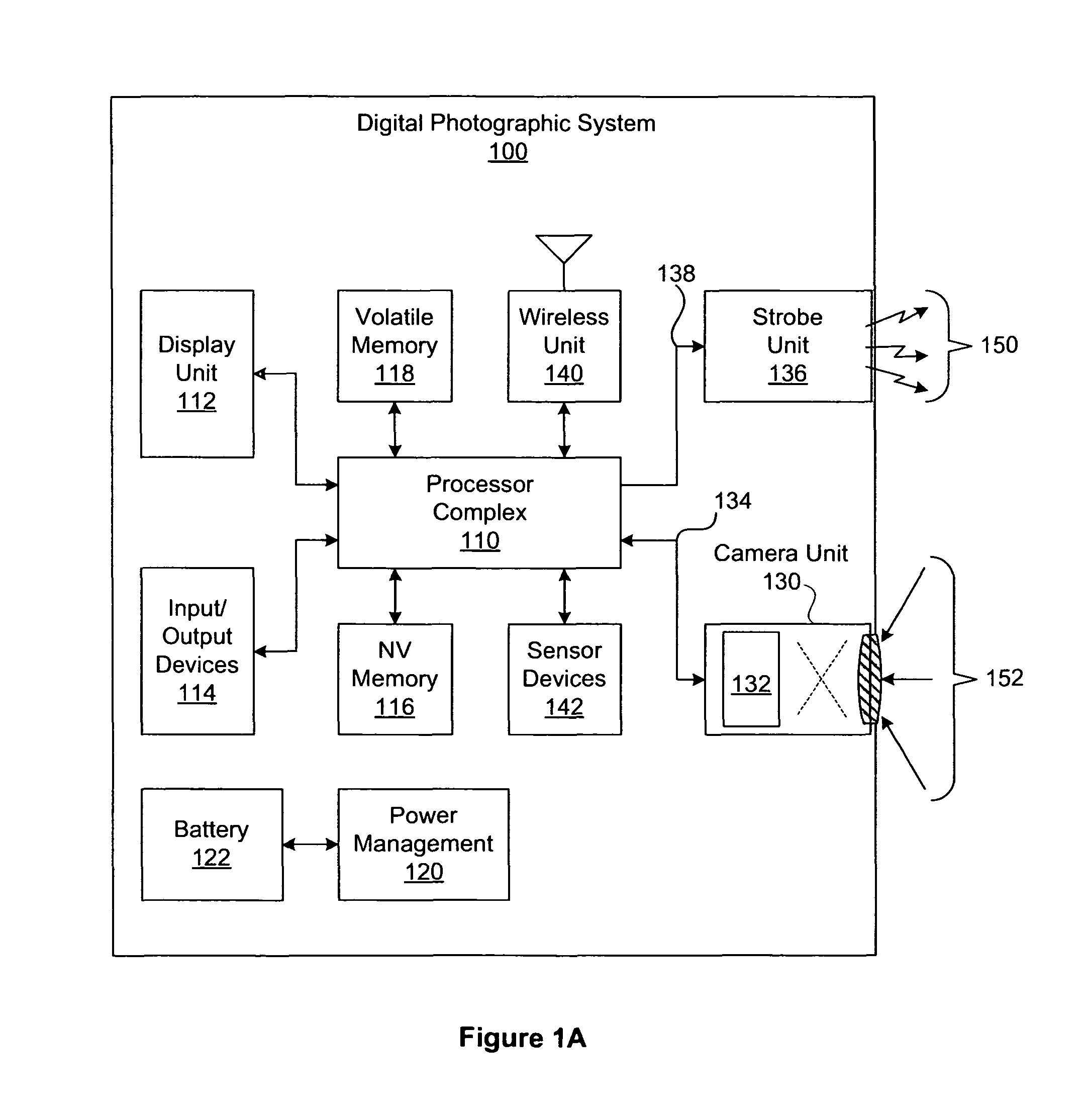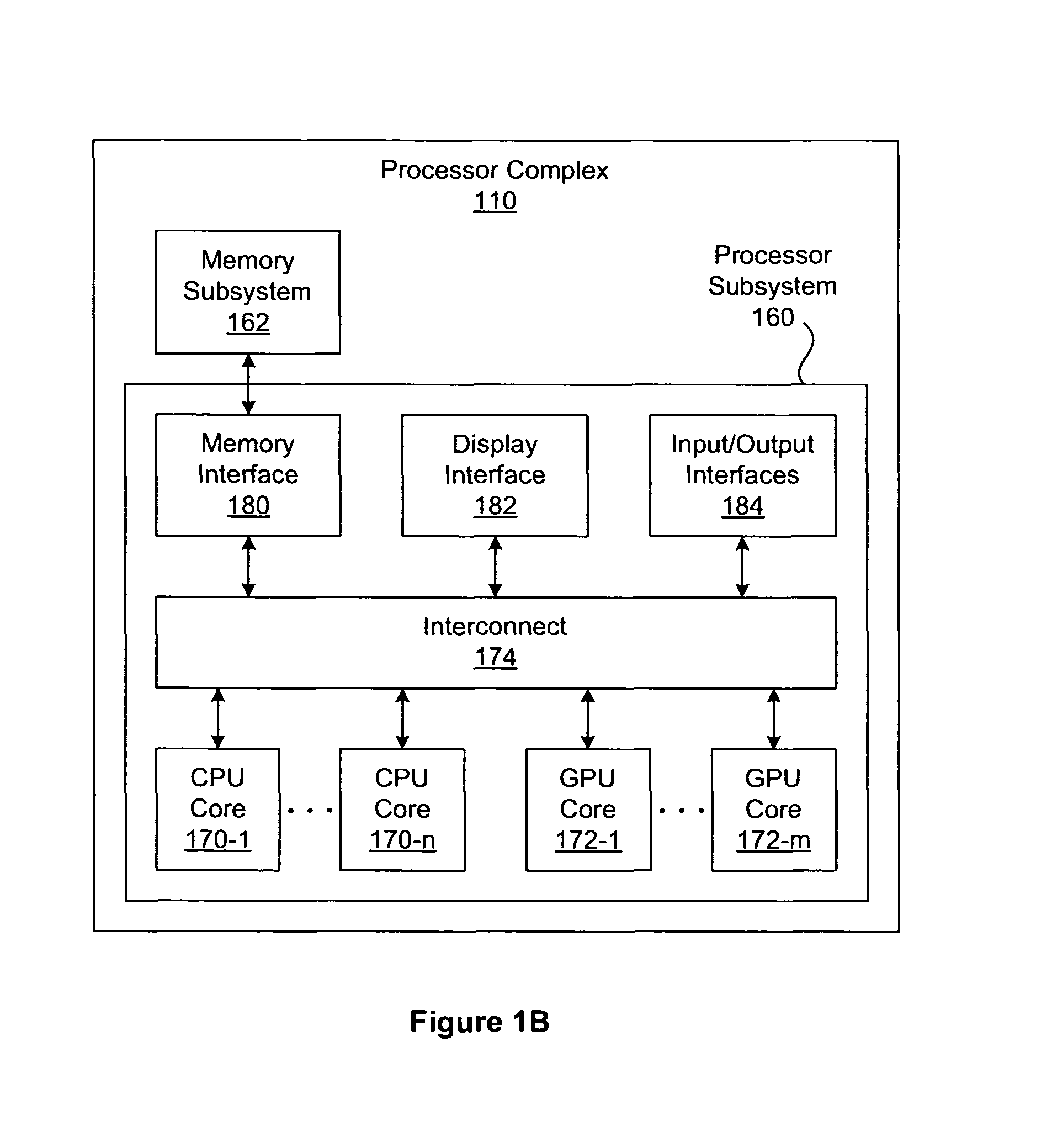Color balance in digital photography
a digital photography and color balance technology, applied in the field of photographic systems, can solve the problems of discordant appearance, insufficient ambient lighting within a scene to produce a properly exposed digital photograph of the scene, and orange appearance of the same white obj
- Summary
- Abstract
- Description
- Claims
- Application Information
AI Technical Summary
Benefits of technology
Problems solved by technology
Method used
Image
Examples
first embodiment
[0163]FIG. 7A is a flow diagram of method 700 for blending a strobe image with an ambient image to generate a blended image, according to the present invention. Although the method steps are described in conjunction with the systems of FIGS. 1A-1D, persons skilled in the art will understand that any system configured to perform the method steps, in any order, is within the scope of the present invention. In one embodiment, method 700 implements data flow 200 of FIG. 2A. The strobe image and the ambient image each comprise at least one pixel and may each comprise an equal number of pixels.
[0164]The method begins in step 710, where a processor complex within a digital photographic system, such as processor complex 110 within digital photographic system 100 of FIG. 1A, receives a strobe image and an ambient image, such as strobe image 210 and ambient image 220, respectively. In step 712, the processor complex generates a blended image, such as blended image 280, by executing a blend op...
second embodiment
[0165]FIG. 7B is a flow diagram of method 702 for blending a strobe image with an ambient image to generate a blended image, according to the present invention. Although the method steps are described in conjunction with the systems of FIGS. 1A-1D, persons skilled in the art will understand that any system configured to perform the method steps, in any order, is within the scope of the present invention. In one embodiment, method 702 implements data flow 202 of FIG. 2B. The strobe image and the ambient image each comprise at least one pixel and may each comprise an equal number of pixels.
[0166]The method begins in step 720, where a processor complex within a digital photographic system, such as processor complex 110 within digital photographic system 100 of FIG. 1A, receives a strobe image and an ambient image, such as strobe image 210 and ambient image 220, respectively. In step 722, the processor complex generates a color corrected strobe image, such as corrected strobe image data...
third embodiment
[0167]FIG. 8A is a flow diagram of method 800 for blending a strobe image with an ambient image to generate a blended image, according to the present invention. Although the method steps are described in conjunction with the systems of FIGS. 1A-1D, persons skilled in the art will understand that any system configured to perform the method steps, in any order, is within the scope of the present invention. In one embodiment, method 800 implements data flow 204 of FIG. 2C. The strobe image and the ambient image each comprise at least one pixel and may each comprise an equal number of pixels.
[0168]The method begins in step 810, where a processor complex within a digital photographic system, such as processor complex 110 within digital photographic system 100 of FIG. 1A, receives a strobe image and an ambient image, such as strobe image 210 and ambient image 220, respectively. In step 812, the processor complex estimates a motion transform between the strobe image and the ambient image. ...
PUM
 Login to View More
Login to View More Abstract
Description
Claims
Application Information
 Login to View More
Login to View More - R&D
- Intellectual Property
- Life Sciences
- Materials
- Tech Scout
- Unparalleled Data Quality
- Higher Quality Content
- 60% Fewer Hallucinations
Browse by: Latest US Patents, China's latest patents, Technical Efficacy Thesaurus, Application Domain, Technology Topic, Popular Technical Reports.
© 2025 PatSnap. All rights reserved.Legal|Privacy policy|Modern Slavery Act Transparency Statement|Sitemap|About US| Contact US: help@patsnap.com



